EXPOSE Network Series
Part 1 : – Introduction to the EXPOSE Network and its Hub, the Open Information Partnership (OIP).
Part 2 : – Examining the role of the EXPOSE network and authenticating the supporting evidence.
Part 3 : – Looking at the Network Facilitator for the EXPOSE Network established by the Zinc Consortium.
Part 5 : – Continuing to look at the EXPOSE Network partners and the web of globalist institutions behind them.
Part 6 : – The global funding streams and parallel international initiatives placing the EXPOSE Network inside a larger multinational operation.
The EXPOSE Network’s Partners
 We are going to start to explore the web of interconnected NGO’s, CSO’s, governments, intelligence agencies and multinational corporations behind the EXPOSE Network. This enables the potential budget and resources for the network to increase, practically without limit.
We are going to start to explore the web of interconnected NGO’s, CSO’s, governments, intelligence agencies and multinational corporations behind the EXPOSE Network. This enables the potential budget and resources for the network to increase, practically without limit.
When the former Minister of State and member of the Parliamentary Intelligence and Security Committee Alan Duncan announced the Open Information Partnership (OIP), he made reference the potential for the EXPOSE Network to expand its funding sources:
“We have a regular dialogue with international partners on the challenge posed by hostile state disinformation, including to align donor support in this field.”
“Donor support” comes from the substructure of organisations, both governmental and non governmental, who use various NGO’s, charities and foundations as funding vehicles to ‘support’ causes favourable to their business and/or political objectives. Their philanthropy and charitable giving is always promoted as humanitarian, depicting wealthy donors and government agencies as caring, global custodians.
However, even the most cursory research soon makes it abundantly clear, in the vast majority of cases, multinational corporations, and those who own them, don’t invest their money in anything unless it serves their interests. These rarely align with the people’s, but they do frequently coalesce with government policy shaped by the same corporations through a multi-billions dollar lobbying industry.
In their technical proposal to the UK Government Foreign and Commonwealth Office (FCO), Zinc Network clearly outlined how they could bring in plenty of “donor support:”
“Zinc will also encourage other donors to provide additional financial resources to the Network and the wider sector. The role of DFRLab in helping to achieve this will be vital, as they will secure the support and buy in from the tech companies including Facebook and Twitter. ZINC also has strong relationships with both the EU and US Government bodies (including the GEC, USAID and EUCOM) responsible for supporting counter disinformation activities, and working under direction from the client we will hold a series of discrete briefings in order to encourage them to leverage funds.”

Whether this convinced the FCO to offer the Zinc consortium the contract isn’t clear. Having NATO on board, in the shape of DFRLab, was probably viewed as encouraging by the FCO. It certainly wouldn’t have harmed their bid. The scope and ambition of the EXPOSE Network propaganda operation quite obviously costs considerably more than the officially allotted £10 million over three years. The money has got to come from somewhere.
The EXPOSE Network resource partners are Zinc, Bellingcat, DFRLabs and the Media Diversity Institute. The main implementing consortium partners are Zinc, the Institute for Statecraft (in some form) and Aktis Strategy (bankrupt). Risk management is reportedly provided by Toro Risk Solutions and Ecorys are said to be the financial managers of the grant fund.
Aktis Strategy no longer exist though some of their former personnel may still be involved in the project. The Institute of Statecraft’s current status is difficult to ascertain but there is a high likelihood that they, or their former team members, remain involved in some capacity. While we cannot categorically state that Toro Risk Solutions are still part of the EXPOSE Network, if not them, then a similar organisation capable of delivering the same level of security are. The same can be said for Ecorys.
Therefore, we are going to focus upon DFRLabs and the Media Diversity Institute here. We’ll look at Zinc & Bellingcat in the next post . These four are the listed resource partners on the solitary OIP webpage. When we look at the access they have to ‘resources,’ the name fits. Before that, let’s first take a quick look at the other likely consortium members.
Aktis Strategy
 Blaming poor financial management and cash flow problems Aktis Strategy declared bankruptcy on 14th March 2019. Formed in 2013, Aktis rose incredibly quickly to become a leading contractor for the UK Government. Primarily for the FCO and the Department for International Development (DfID). They worked on security and development programs in countries including Iraq, Tunisia, Syria, Turkey, Somalia, and Lebanon.
Blaming poor financial management and cash flow problems Aktis Strategy declared bankruptcy on 14th March 2019. Formed in 2013, Aktis rose incredibly quickly to become a leading contractor for the UK Government. Primarily for the FCO and the Department for International Development (DfID). They worked on security and development programs in countries including Iraq, Tunisia, Syria, Turkey, Somalia, and Lebanon.
Aktis Strategy’s sudden demise potentially left many projects in crisis. There were significant concerns about this and the loss of financial data. This was a worry expressed in Somaliland, for example, where Aktis were worked with another British company Axiom International. Aktis’ Twitter feed shows they were active on 22nd February 2019. A pinned tweet from January states that the Aktis were working with Axiom in Somaliland, where they were visited by then UK Secretary of State for Defence Gavin Williams. There is no evidence that Axiom are in any way involved in the EXPOSE Network.
Ecorys
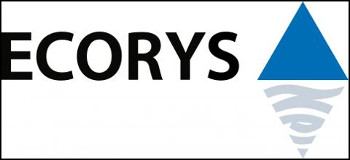 The EXPOSE Network distributes funds to its ‘network of actors’ via its grant system. This is reportedly managed by Ecorys. They are a global research, communications services and management consultancy firm. They provide consultancy services to a range of government, supranational government and non governmental organisations. These include the EU, the World Bank, the European Investment Bank, USAID and UNICEF.
The EXPOSE Network distributes funds to its ‘network of actors’ via its grant system. This is reportedly managed by Ecorys. They are a global research, communications services and management consultancy firm. They provide consultancy services to a range of government, supranational government and non governmental organisations. These include the EU, the World Bank, the European Investment Bank, USAID and UNICEF.
The sectors they focus upon include Security and Justice. With regard to security they state:
“Ecorys supports European security policies by providing evidence-based research, policy advice and organisational assistance on security themes and initiatives. We are partners of the European Commissions’ multi-annual project on ‘Community of Users in the area of Secure, Safe and Resilient Societies’. The project promotes delivery of training projects surrounding risks such as man-made/natural disasters, border security and terrorism.”
Toro Risk Solutions
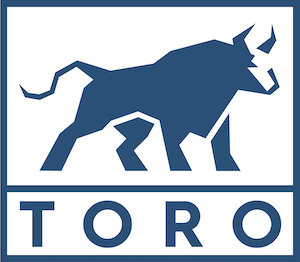 Toro Risk Solutions are named as risk managers for the EXPOSE Network. They state on their website that they offer “Discreet, professional & competitive support to businesses, Governments & private clients.” They provide specialists services in counter terrorism, counter misinformation, intelligence, surveillance & reconnaissance, cyber defence & digital exploitation to corporate and government clients.
Toro Risk Solutions are named as risk managers for the EXPOSE Network. They state on their website that they offer “Discreet, professional & competitive support to businesses, Governments & private clients.” They provide specialists services in counter terrorism, counter misinformation, intelligence, surveillance & reconnaissance, cyber defence & digital exploitation to corporate and government clients.
Toro’s CEO is Peter Connolly, a listed member of the Exercise Group 7 (TEG7.) He has a British military background, having led troops on counter insurgency and counter terrorism operations in Afghanistan, Iraq, Northern Ireland, Kenya and Somalia. He developed ‘Red Team Penetration Testing’ which simulates Wi-Fi attacks; hostile reconnaissance; surveillance; phishing; spoofing; social engineering (by phone, online and in person); physical intrusion and computer network exploitation. Presumably, these skills are a useful addition to the EXPOSE Network’s counter disinformation strategy.
EXPOSE Network’s head of Cyber and IT is listed as Toro’s Jeremy Lloyd who was also a member of the Core Project Delivery Team in the Zinc led bid. Jeremy specialises in cyber security software, having developed solutions for the financial industry. Toro state that all their staff, like Jeremy, are “highly vetted and have a solid track record of working in corporate security and for the UK Government.”
The EXPOSE Network Head of Physical Security is a Toro consultant called Chris White. An experienced Incident/Crisis Manager for the UK government, he was a former chief of covert operations for a UK Multinational Task Force in ‘non-traditional overseas environments.’
Toro Risk Solutions are a NATO training partner. It is extremely unlikely they would do anything to jeopardise such a valuable commercial relationship.
The Institute for Statecraft
The Institute for Statecraft (IfS) appear to be in something of a hiatus. Though appearances can be deceiving. They are a registered Scottish charity. However, their previous registered charity address was a semi derelict Mill in Fife in Scotland. They are still active on Twitter but their Facebook activity tailed off in May 2019. Their Twitter use now appears to consist of no more than retweets, though it shows they remain functional in some capacity.
 The IfS came to prominence in 2018 when leaked documents on the Integrity Initiative , founded by the IfS, came to light. The Integrity Initiative was directly funded by the UK government and, just like the EXPOSE Network, was a project of the Counter Disinformation and Media Development (CDMD) program, headed by Andy Pryce. Additional funding came from NATO, The Lithuanian Defence Ministry, The Smith Richardson Foundation, Facebook, the U.S State Department and others.
The IfS came to prominence in 2018 when leaked documents on the Integrity Initiative , founded by the IfS, came to light. The Integrity Initiative was directly funded by the UK government and, just like the EXPOSE Network, was a project of the Counter Disinformation and Media Development (CDMD) program, headed by Andy Pryce. Additional funding came from NATO, The Lithuanian Defence Ministry, The Smith Richardson Foundation, Facebook, the U.S State Department and others.
Claiming they were ‘hacked,’ they effectively shut down their website in February 2019. The investigation into the alleged ‘hacking’ was undertaken by the National Cyber Security Center, part of the Government Communications Head Quarters (GCHQ.) Unusual for a charity.
No evidence has been produced in the public domain that any ‘hacking’ occurred. As is often the case, all we have are statements from government saying it happened. The Kremlin have been blamed but, without any evidence, a leak seems equally credible.
In response to the release of information the Integrity Initiative made a statement:
“The Integrity Initiative is a partnership of several independent institutions led by The Institute for Statecraft. This international public programme was set up in 2015 to counter disinformation and other forms of malign influence being conducted by states and sub-state actors seeking to interfere in democratic processes and to undermine public confidence in national political institutions……It is inevitable that a programme tackling disinformation in Europe finds itself spending much of its time addressing the activities of the Russian State, including those carried out through its intelligence services. The Kremlin has invested more operational thought, intent and resource in disinformation, in Europe and elsewhere in the democratic world, than any other single player.”
Just like the EXPOSE Network it is clear the Integrity Initiative was “tackling disinformation in Europe.” Its stated purpose was identical to that of the EXPOSE Network. Namely a ‘counter disinformation’ effort, primarily directed against the Kremlin.
The Integrity Initiative’s exposure led to some uncomfortable revelations for the UK Conservative Government. It appears their ‘counter disinformation’ operations included interference in European democracies.
As with the EXPOSE Network the Integrity Initiative operated a network of actors across Europe called ‘clusters.’ One such cluster in Spain, supported by others, launched a coordinated media and social media smear campaign to stop the announced appointment of soldier and academic Pedro Baños Bajo to the role of Director of the Spanish Department of Homeland Security. The Integrity Initiative were apparently willing to “interfere in democratic processes” themselves.
It seems they were also engaged in, among other activities, a propaganda campaign in the UK against the leader of her Majesty’s Opposition, Labour leader Jeremy Corbyn. This forced a damage limitation apology, of sorts, from the one of the directors of the IfS Christopher Donnelly. It is difficult to understand how such activity can be deemed ‘counter disinformation.’
The similarities with the EXPOSE Network continue. The Integrity Initiative network of ‘clusters’ employed many of the same actors, such as StopFake in the Ukraine, who are also recommended for inclusion in the EXPOSE Network.

Christopher Donnelly, co-founding director of the Integrity Initiative, is one of the implementing board members, and sits on the project board, of the EXPOSE Network. He has provided advice to four Secretaries-General’s of NATO and numerous Chiefs of the Defence Staff. He’s been a ‘Specialist Adviser’ to three UK Defence Secretaries (both Labour and Conservative), the House of Commons Public Administration Select Committee and currently advises the Intelligence and Defence Committee. He is not the only members of the IfS who has apparently transferred across to the EXPOSE Network Facilitator.
Ben Fellows, a Network Manager for the EXPOSE Network, was also a member the IfS team with responsibility for the Integrity Initiative’s Ukraine operation, working alongside StopFake. The EXPOSE Network’s Legal Advice is provided by James Wilson. He gained further experience of advising NGOs and other specialist groups across Europe on defamation, data protection, commercial contracts, corporate governance and cyber security during his time as legal advisor to the Integrity Initiative.
Just like the EXPOSE Network, it is evident the IfS were set up partly to protect the reputation of their client, The UK Government FCO. This is exemplified in another document, in the 7th Integrity Initiative leak, called Proposal To Understand and Counter Russian Active Measures:
“This project is best undertaken outside direct government control to minimise the inevitable accusation of being part of an orchestrated state-sponsored active measure. Using the IfS extensive and trusted network, including its existing Integrity Initiative, can keep the project somewhat under the radar while still accessing state and non-state actors that may not be so open with central government approaches in this area.”
This ‘under the radar’ approach is also common to the EXPOSE Network. Both the EXPOSE Network and the Integrity Initiative (& IfS) share the same objectives, methods, funding sources, operational management, oversight and even some of the same staff. In fact, in many regards, the EXPOSE Network appears to be the Integrity Initiative by another name. It is notable that the IfS web presence ‘went dark’ only a matter of weeks before the EXPOSE Network and the OIP appeared.
EXPOSE Network Resource Partners
The Media Diversity Institute (MDI)
 The Media Diversity Institute (MDI) is another UK based charity (1110263 – Media Diversity). Their beneficial purpose is stated as:
The Media Diversity Institute (MDI) is another UK based charity (1110263 – Media Diversity). Their beneficial purpose is stated as:
“Training for journalists; Media relations training for NGO’s; training for journalism academics and setting up specialist curricula in universities; research and media monitoring.”
They seem like a perfect fit for the EXPOSE Network’s propaganda operations. What better way than to train journalists while they are still in university. Their media monitoring will also be useful for reporting data in real time to the UK Government, identifying ‘individuals vulnerable to disinformation.’
They say on their website that they engage with a range of “actors in society who can influence media coverage of diversity.” These include media decision makers (owners, editors, and managers), Civil Society Organisations (CSOs), journalists and governmental organisations. They achieve this by running conferences, workshops and courses. They publish manuals and media resources, produce online, radio, TV and print media and are active in Europe, the former Soviet States, Sub-Saharan Africa, the Middle East, North Africa, and South East Asia.
A truly amazing achievement for just four paid staff and four registered volunteers. Presumably these people are incredibly well paid. They certainly have access to the necessary ‘donor support‘.
The Council of Europe, the European Commission, the Eurasia Foundation, Dutch Ministry for Foreign Affairs, UK FCO & DfID, the Swiss Agency for Development and Cooperation (SDC), the Swedish International Cooperation Development Agency (SIDA), the Open Society Institute, the United Nations Development Program, UNESCO & the UNHCR and the Westminster Foundation for Democracy (partners of the World Bank) are among those paying four people to deliver media training across the world.
The team has become even more stretched recently. The Executive Director Melica Pesic is now on the advisory board of the EXPOSE Network, which MDI reference only as the Open Information Partnership, neglecting to mention it’s the Network Hub of the EXPOSE Network. A quick look at their current projects see’s that they are all very much engaged with young people in places like Jordan, Serbia and Macedonia in addition to projects, spanning entire continents, working with children’s ‘hearts and minds.’
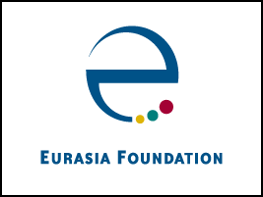 While the MDI say they advocate diversity and combat hate we can understand the kind of policies they are actually required to promote if we look at just one of their funders. The Eurasia Foundation, founded in 1992, presents itself as wonderful organisation which “amplifies the voices of marginalized groups, particularly women, youth, minority populations, and the economically disenfranchised.” Their website is full of banal, if heart warming, corporate jargon about empowering people, building partnerships and addressing barriers.
While the MDI say they advocate diversity and combat hate we can understand the kind of policies they are actually required to promote if we look at just one of their funders. The Eurasia Foundation, founded in 1992, presents itself as wonderful organisation which “amplifies the voices of marginalized groups, particularly women, youth, minority populations, and the economically disenfranchised.” Their website is full of banal, if heart warming, corporate jargon about empowering people, building partnerships and addressing barriers.
However, we can get a more useful information if we look at a previous iteration of their website. The Eurasia Foundation makes grants for the “accelerated development and growth of private enterprise.”
They receive the bulk of their funding from the United States Agency for International Development (USAID) and the U.S. Department of State. USAID are a funding vehicle used to promote U.S foreign policy and commercial interests. The U.S Department of State claim:
“The Department of State and USAID are indispensable tools for resolving the most difficult national security issues and protecting our (U.S. Government) freedoms”
[Note: Bracketed information added.]
At the launch of President Trump’s strategy for Countering Malign Kremlin Influence (CMKI) the head of USAID Mark Green gave an address to the gathered MSM. He said:
“President Reagan [also] warned us that freedom and democracy are neither assured or inevitable. In his historic speech before the British Parliament, Reagan said, “No, democracy is not a fragile flower. Still it needs cultivating.” In other words, we can never rest.”
Reagan’s speech came to be known as the Westminster Address. It was a pivotal moment in the history of the west’s strategy for countering Kremlin disinformation. Something we’ll discuss in more detail in Part 5. Green continued:
“At USAID, we’re stepping forward to assist democracies and institutions who may be targeted by Kremlin aggression. We’ve crafted a framework for this assistance, that we call….CMKI…….at the heart of CMKI is our support for building the capacity of indigenous media to provide trusted, independent news and information services…..We’re also supporting extensive media literacy programs in targeted countries……In Europe and Eurasia, the Kremlin’s efforts are unmistakable……Thousands of Kremlin paid teams flood platforms and peddle content designed to create confusion, distrust, and cynicism about democratic and Western institutions.”
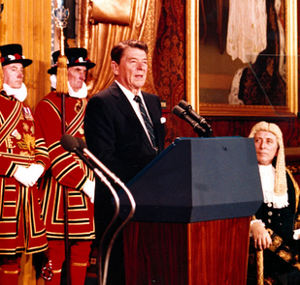
It is notable that, to date, there is absolutely no publicly available evidence at all to substantiate any of these claims about the scale of Kremlin disinformation. We just have to take Mr Green’s word for it. In his address, Green accurately encapsulated the purpose of the EXPOSE Network. He could have been describing the work of the Media Diversity Institute too, who are also funded by USAID via the Eurasia Foundation.
In the 2020 Congressional Budget Justification for USAID spending, $628.1 million was allocated to the U.S. Agency for Global Media (USAGM). Their board include former Director of the CIA and current U.S Secretary of State Mike Pompeo. Their networks include Voice of America (VOA), RadioFreeEurope/Radio Liberty and the Middle East Broadcasting Networks (MBN).
RadioFreeEurope/RadioLiberty (RFE/RL), was created by the CIA in 1949 via its front organisation The National Committee For a Free Europe. During a difficult period for U.S intelligence, in 1972 the CIA officially withdrew their funding which then came under the purview of the the U.S. Board for International Broadcasting (BIB). In 1994 this became the Broadcasting Board of Governors, changing it’s name to USAGM in 2018. Welcoming the name change, the former CEO of the USAGM, John F. Lansing, said:
“The U.S. Agency for Global Media is a modern media organization, operating far beyond the traditional broadcast mediums of television and radio to include digital and mobile platforms. The term “broadcasting” does not accurately describe what we do……the agency’s global priorities [, which] reflect U.S. national security and public diplomacy interests…..Now more than ever, people around the world need access to the truth. USAGM continues to tell the truth, and illuminate the world like no other news organization in the world.”
Some of the recent ‘U.S. national security and public diplomacy interests‘ have been reflected in U.S. attempts at ‘regime change‘ in Venezuela, aimed at ousting the elected President Nicolás Maduro. As part of what now appears a faltering effort, the USAGM instigated a media campaign against the incumbent Venezuelan president. The reason for this was simply that the U.S, state wanted U.S. corporations to get their their hands of Venezuelan oil reserves. While in office, former National Security Advisor John Bolton told Fox news:
“It will make a big difference to the United States economically if we could have American oil companies invest in and produce the oil capabilities in Venezuela.”
A hard nosed approach some distance away from the puritanical humanitarian aspirations of the Eurasia Foundation and the MRI.
In February 2019 it was widely reported by the MSM that deadly clashes had broken out when Maduro’s forces allegedly stopped a much needed aid convoy of medicine from reaching the supposedly beleaguered people. The central allegation, unquestioningly propagated by the USAGM media, were that the Venezuelan military had set fire to the convoy.
The western media narrative, spread with the assistance of global news agencies such as Associated Press (AP), was provably false in almost every regard. Firstly The convoy was the responsibility of USAID and they didn’t list medecine but rather medical supplies, such as surgical masks, as the contents. Secondly, despite numerous fake news reports to the contrary, the Maduro government were allowing aid into the country from organisations such as the International Red Cross. Moreover, video footage and photographic evidence proved that it was the anti government protestors on the Columbian side of the border who set fire to the trucks, not the Venezuelan authorities.
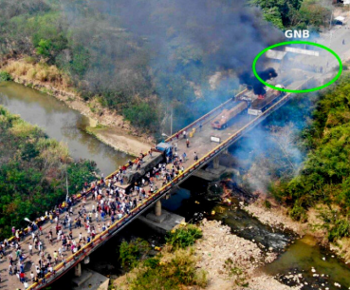 It was all ‘fake news.’ STRATCOM (strategic communications) or ‘propaganda’ in its purest form. Thanks to independent investigative reporters and modern communication technology, enabled by the Internet, the hoax was soon exposed. “Now more than ever, people around the world need access to the truth.”
It was all ‘fake news.’ STRATCOM (strategic communications) or ‘propaganda’ in its purest form. Thanks to independent investigative reporters and modern communication technology, enabled by the Internet, the hoax was soon exposed. “Now more than ever, people around the world need access to the truth.”
Another example of how USAID protects U.S national security was their funding of the ZunZuneo social media movement in Cuba. Between 2009 – 2012, via a system of shell companies and offshore banks, funds were channeled by USAID to a network of social media users with a view to fomenting dissent among young Cubans, against the Castro government. The youngsters’ data was then hoovered up, almost certainly by the U.S intelligence agencies.
USAID are currently preoccupied with the Internet and digital solutions. Their sprawling partnerships and numerous initiatives aim to “maximize the return on USAID’s investment, and ensure sustainability by supporting market-driven solutions.” For example, the Alliance for Affordable Internet sees them partner with Google, the Omidyar Network (Luminate) and the UK Government’s DfID in a “broad coalition of governments, technology providers, civil society groups.”
Similarly their Better Than Cash Alliance, which seeks to do away with cash, making sure all transactions are monitored by the ubiquitous global corporate state, aligns them with the Bill and Melinda Gates Foundation, Citi, Ford Foundation, Mastercard, Omidyar Network, UNCDF and Visa. Initially they have offered their cashless transaction monitoring system to ‘partners‘ within the governments of Malawi, Colombia, Afghanistan, Kenya, Peru, the Philippines, and Rwanda. Maximising the return on USAID’s, and American corporation’s, investments.
On behalf of USAID, the Eurasia Foundation makes grants to further these U.S. national security interests. As a funder of MDI, a key resource partner in the EXPOSE network, they will be expected to ensure USAID and the U.S Department of State’s commercial and political objectives are met. MDI will need to keep the EXPOSE network’s ‘counter disinformation’ efforts on track. Making sure they deliver on this commitment.
Objectivity, transparency, honesty and journalistic integrity are not priorities. Neither is counter disinformation. What matters is that U.S. national security interests are promoted.
Digital Forensic Research Laboratory (DFRLab)
 (DFRLab) is a program of the Atlantic Council. The Atlantic Council is a NATO think tank, lobby group and policy advisor. In other words, DFRLab represent NATO.
(DFRLab) is a program of the Atlantic Council. The Atlantic Council is a NATO think tank, lobby group and policy advisor. In other words, DFRLab represent NATO.
While the Atlantic Council claim they are ‘independent’ they receive financial support from the U.S. Departments of State plus the Departments of the Air Force, Army, Navy and Defence. Which is another way of saying they are funded by the U.S. Government. Additional government support comes from the UK (FCO), United Arab Emirates, Denmark, Sweden, Japan, Norway and others.
The Atlantic Council are the epitome of what some call the shadow government, or deep state. This is the intertwining network of governments, NGO’s, corporations and wealthy foundations which form a global web of coalescing commercial and political interests. Those who contribute to the Atlantic Council expect to profit economically and politically from the Atlantic Council’s ability to shape NATO policy.
There is no doubt about the revolving door between NATO and the independent Atlantic Council, nor any about its ability to influence NATO policy. For example, only six months after ‘stepping down’ as NATO’s Supreme Allied Commander in Europe, Gen. James L. Jones became Chairman of the Atlantic Council. He quickly formed the Atlantic Council’s Strategic Advisors Group (SAG). In 2008 the group set about an ambitious NATO reform program, it’s role to produce:
“…..major public policy briefs and reports, host[s] off-the-record Strategy Sessions for senior U.S. and European civilian and military officials, and provide[s] informal, expert advice to senior policymakers.”
The revolving door rapidly turned again for Gen. Jones and, in May 2009, he was appointed by the Obama administration as National Security Advisor on the U.S. National Security Committee (NSC).
In the meantime the SAG’s report’s were presented to U.S Senate Foreign Relations Committee among others; they briefed military and civilian leaders at NATO headquarters; between 2008 to 2010 they attended all five official NATO conferences on the New Strategic Concept and were co hosts of the Washington Conference at the National Defense University with then NATO Secretary General Anders Fogh Rasmussen, Defense Secretary Robert Gates and the Secretary of State Hilary Clinton, in attendance.
In a fairly typical example of how the Atlantic Council operate, Gen. Jones had essentially been seconded to them to set up the SAG. The SAG produced the reports that influenced policy makers to support NATO’s New Strategic Concept. With the political will secured, Jones was then appointed to government to make sure the NATO policy, he had played a major role in creating, was implemented.
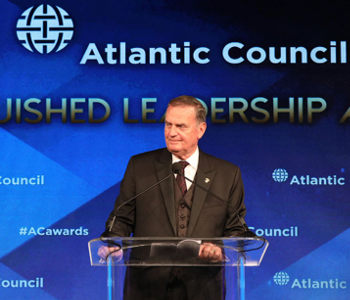
The Atlantic Council offer a corporate program allowing private corporation to partner with NATO. Their Convene, Connect, Colaborate (CCC) program:
“….engages the private sector as a crucial partner. Through substantive partnerships, networking opportunities, event sponsorship, and corporate membership, the program provides partners unique opportunities to achieve business and corporate responsibility goals.”
These partners, via CCC and other Atlantic Council ‘programs,’ include the defence contractors Raytheon, Lockheed Martin, Boeing, Thales Group, Northrop Grumman and MBDA. So what business goals might they hope to bolster through their partnership with NATO?
To date, the War on Terror is conservatively estimated to have cost in the region of $6 Trillion in the U.S. alone. This tax revenue then flows into the coffers of the defence contractor’s major shareholders. From a financial perspective, it’s as simple as that.
The War on Terror started, not in response to the attacks on the September 11th 2001, but rather as a result of the attribution of guilt for those attacks. The whole basis for a global war against Islamist extremists, costing millions of lives, was predicated upon this determination of culpability.
On September 12th the NATO Council of member states met to express their willingness to stand behind the U.S. This included a possible invocation of Article 5 of the Washington (NATO) Treaty. This broadly stipulates that an attack against one member state can be deemed an attack against all. It authorises a range of possible responses, including military action.

The War on Terror began in earnest when then NATO Secretary General Lord Robertson gave a public address on October 2nd 2001. Under Article 5, from that point on, the NATO coalition were embroiled in conflict against, what was then, a largely invisible enemy. Lord Robertson stated:
“This morning, the United States briefed the North Atlantic Council on the results of the investigation into who was responsible for the horrific terrorist attacks which took place on 11 September. The briefing was given by Ambassador Frank Taylor, the United States Department of State Coordinator for Counter-terrorism.
Today’s (briefing) was [a] classified briefing and so I cannot give you all the details. Briefings are also being given directly by the United States to the Allies in their capitals.
The briefing addressed the events of 11 September themselves, the results of the investigation so far, what is known about Osama bin Laden and the Al-Qaida organisation and their involvement in the attacks and in previous terrorist activity, and the links between Al-Qaida and the Taleban regime in Afghanistan.
The facts are clear and compelling. The information presented points conclusively to an Al-Qaida role in the 11 September attacks.
We know that the individuals who carried out these attacks were part of the world-wide terrorist network of Al-Qaida, headed by Osama bin Laden and his key lieutenants and protected by the Taleban.”
[Note: Bracketed informationa added]
So the message was clear and unequivocal. Following a thorough investigation by the U.S Department of State, Ambassador Frank Taylor gave oral briefings to NATO, reporting the hard evidence proving al Qaeda’s guilt and their links to the Taliban. All the evidence is secret but NATO found the facts ‘clear and compelling.’ This provided the legal basis for the U.S. led invasion of Afghanistan and then the wider War on Terror, still raging today.
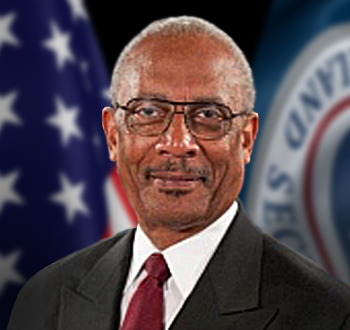
Frank Taylor’s oral briefing notes were declassified in 2009. Called “Working Together To Fight The Plague of Global Terrorism” and dated October 1st 2001, the day before Robertson’s address. It is undoubtedly the briefing referenced. We know this because the “the Allies in their capitals” are the listed recipients and a section of the report was copied and pasted directly into the NATO Secretary General’s speech:
“The facts are clear and compelling……….We know that the individuals who carried out these attacks were part of the world-wide terrorist network of Al-Qaida, headed by Osama bin Laden and his key lieutenants and protected by the Taliban.”
So what was the evidence NATO found so compelling?
Nothing! There is no evidence at all anywhere in the document that links either al-Qaeda or Ossama bin Laden to the 11th September attacks. There are an awful lot of statements, assertions and claims but no actual evidence. In no way does it come anywhere near to the standard of evidence required in a magistrate’s court, let alone the NATO Council.
For example, one of the alleged terrorists was supposedly identified from the flight manifests as Kalid al Midhar. The U.S. State Department then point out that they have intelligence that someone identified as “Khalid the Saudi” may have had something to do with the East Africa Embassy bombings. Therefore this must be the same Khalid al Midhar because he too was a Saudi called Khaled. Apparently the U.S. State department have information which identifies him as an al-Qaeda operative. They just don’t say what it is.
If you read the document hoping to find something more substantial, you will be disappointed. Yet NATO were sufficiently convinced to authorise a global conflict, on numerous fronts, off its back.
No wonder multinational corporations, governments and their NGO’s are queuing up to give some ‘donor support’ to the Atlantic Council. It appears NATO will believe anything. If your aim is to profit from war, you are on to a winner.
NATO class disinformation as being part of something they call hybrid warfare. This is the blurring of the lines between war and peace General Carter spoke of recently. When war is peace, perpetual war is guaranteed, as are related profits. To this end, “NATO is strengthening its coordination with partners, including the European Union, in efforts to counter hybrid threats. It also actively counters propaganda – not with more propaganda, but with facts – online, on air and in print.”
Throughout their technical proposal Zinc were very keen to highlight the exemplary work of DFRLab and to stress they were on board with the EXPOSE Network project. They say they are vital and ‘global leaders in tracking disinformnation,’ that they set standards and are experts. However, given the measure of evidence acceptable to the Atlantic Council and NATO we might have some reservations.
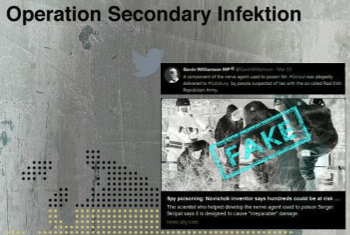 This summer, NATO’s self proclaimed Digital Sherlocks released their report into an alleged Kremlin disinformation cell they called Operation Secondary Infektion. There is no such operation by the way, it’s just a name DFRLab made up. Most people might expect a ‘forensic investigation’ to analyse the available evidence, giving clear citation and attribution and then form a meaningful conclusion based upon the known evidence. That is not what DFRLab did.
This summer, NATO’s self proclaimed Digital Sherlocks released their report into an alleged Kremlin disinformation cell they called Operation Secondary Infektion. There is no such operation by the way, it’s just a name DFRLab made up. Most people might expect a ‘forensic investigation’ to analyse the available evidence, giving clear citation and attribution and then form a meaningful conclusion based upon the known evidence. That is not what DFRLab did.
DFRLab made some dramatic claims:
“The Atlantic Council’s Digital Forensic Research Lab (DFRLab) uncovered a large-scale influence operation that spanned nine languages, over 30 social networks and blogging platforms, and scores of fake user profiles and identities…..The scale of the operation, its tradecraft, and its obsession with secrecy, indicate that it was run by a persistent, sophisticated, and well-resourced organization……”
They add:
“Possibly an intelligence agency.”
Possibly I suppose but, using Occam’s Razor, probably not.
DFRLab claim their investigation was based upon Facebook’s discovery of a “small network of fake accounts emanating from Russia.” They can’t be certain they were Russian because“DFRLab does not receive access to Facebook’s backend data.”
DFRLab decided they probably were Russian because “contextual and linguistic points helped to corroborate Facebook’s attribution to a likely Russian source.” These accounts were said to be spreading disinformation. However, “there were only 16 accounts, and their posts had little impact.”
So Facebook appear to have identified a small, ineffectual group of accounts posting stupid stuff on their platform. They may or may not have been Russian. Their English wasn’t great so they were probably not from an English speaking country. Their syntax indicated they might be Eastern European, or possibly even Russian. No one knows for sure.
According to DFRLab this was just the ‘tip of a much larger iceberg.’ They claim the iceberg was “operated from Russia.” Unfortunately, they don’t present a scrap of evidence to substantiate any of this.
They allege “The operation was ambitious, although its reach was small.” So not so much of an iceberg, more of an ice cube. It also begs the question, if its reach was small, how DFRLab knew the scale of its ambition? They go on:
“Fortunately, almost none of the operation’s stories gained traction. Some were ignored; others were mocked by forum users as soon as they were posted, in a welcome sign of public awareness of the dangers of disinformation.”
In that statement DFRLab managed, not only to utterly undermine their own ludicrous claims, but also the entire Kremlin disinformation narrative and the whole reason for the supposed existence of the EXPOSE Network. Despite having no reason to do so, let’s accept DFRLab’s story for a moment. If a network of Russian disinformation operatives are posting information online, which doesn’t gain any traction and ends up either being completely ignored or mocked, what on Earth do the public need to pay the EXPOSE Network for?
As if that wasn’t enough, DFRLab add:
“Open sources cannot attribute this operation to a particular Russian actor with high confidence, although the approach and tradecraft resemble an operation by an intelligence service.”
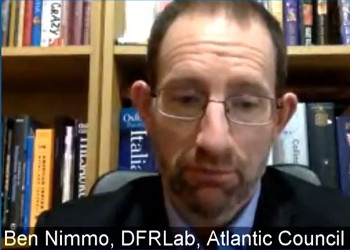
If OSINT can’t tell the difference between an SVR agent, spinning online propaganda, and a stoned Lithuanian teenager, winding people up on Reddit for a laugh, what use is it? This abject bilge continues for more than 60 pages. Listing numerous spoof accounts and fake stories which literally anyone could have posted. Tenuous links are drawn between alleged ‘networks’ (no evidence provided) as the whole random heap of jumbled rubbish ends in its depressingly irrelevant conclusion:
“More research would be needed to verify the attribution.”
Two of the co-authors of this publication, which they have the audacity to call a report, are Benn Nimmo and Graham Bookie. Both Benn and Graham are on the interim advisory panel of the EXPOSE Network. Perhaps more worryingly Eric Toler, from DFRLab, is the EXPOSE Network’s Open Source Researcher and Trainer.
Sold by Zinc as the vital experts at the forefront of the imagined battle against conspicuously absent Kremlin disinformation, if their Operation Secondary Infection ‘report’ is anything to go by, DFRLab’s ability to investigative evidence and form a rational conclusion, is minimal. You have to wonder if the EXPOSE Network even believe Kremlin disinformation to be a threat.
They don’t seem that interested in investigating what little evidence there is for genuine Russian propaganda operations. Perhaps doing so would simply reveal their relative impotency. The EXPOSE Network’s agenda appears to be to guide the public towards whatever objective NATO, USAID, the U.S. State Department and the vast array of government and corporate interests behind them, wish to achieve.
Something which becomes even more evident when we look at the two remaining resource partners, Bellingcat and Zinc Network. Which we do in Part 5.

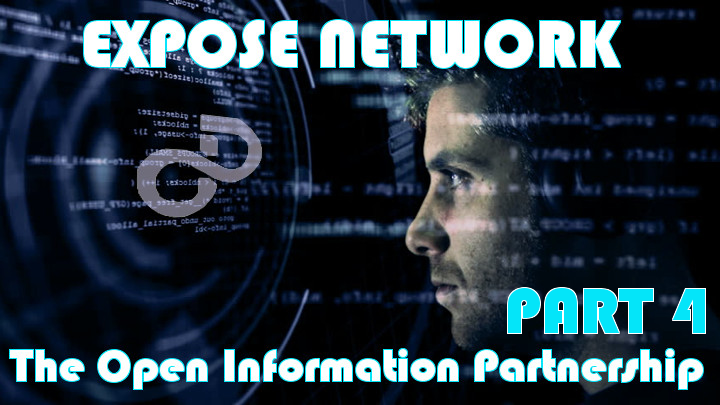


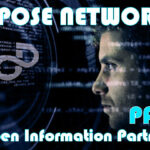
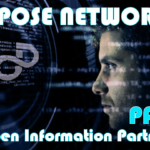
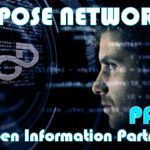
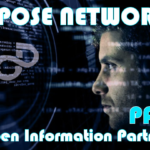
Be the first to comment on "EXPOSE Network and the Open Information Partnership – Part 4"